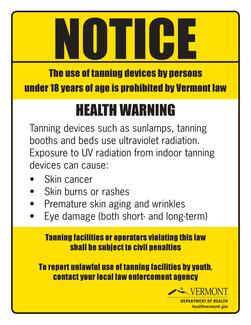Cancer develops gradually as a result of many different factors related to lifestyle choices, environment and genetics. Anyone can develop cancer, but many cancers can be prevented. Personal behaviors such as tobacco use, alcohol use, poor diet, physical inactivity and overexposure to sunlight can increase the risk of developing certain cancers. Other influences such as viral infections and environmental exposures can also increase a person’s risk for cancer.
Cancer and 3-4-50: Nearly two-thirds of cancer deaths in the U.S. can be linked to tobacco use, poor diet, and lack of exercise. In Vermont, these 3 behaviors lead to 4 diseases – cancer, cardiovascular disease, diabetes and lung disease – resulting in more than 50% of deaths in Vermont. The 3-4-50 initiative helps to understand the toll of unhealthy behaviors on the lives of Vermonters and shows the way to reduce cancer and other chronic diseases in our state. Learn more about 3-4-50

